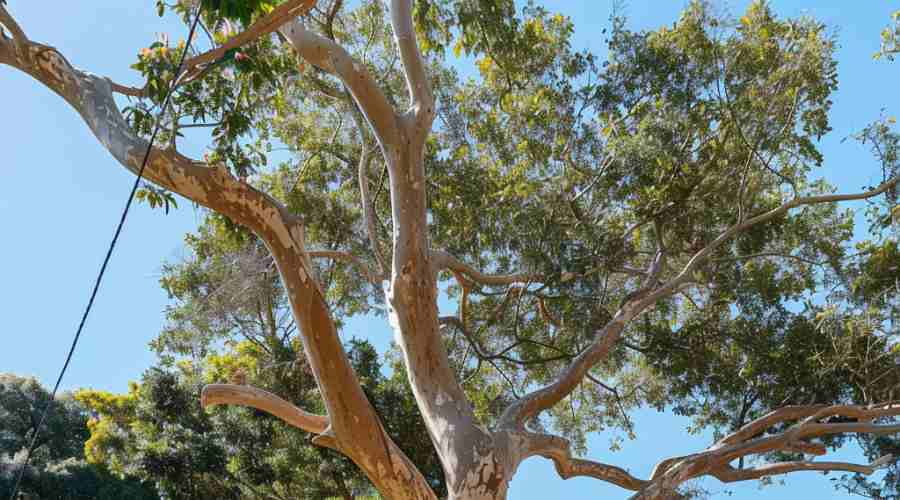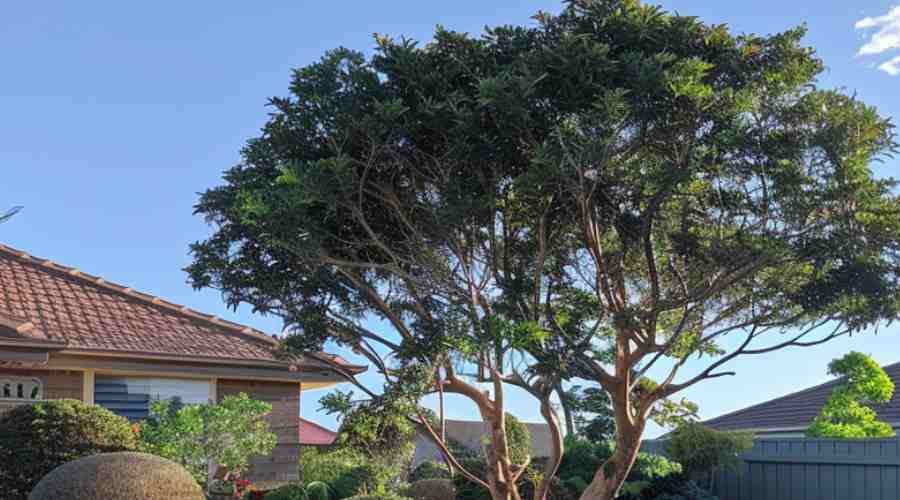Tree Pruning Vs. Tree Lopping
Know the Key Differences
Deciding whether to prune or lop a tree on your property is an important choice. While both techniques involve cutting tree branches, there are some differences between pruning and lopping that you need to understand. Getting this decision right will ensure the health and safety of your landscape for years to come.
What is Tree Lopping?
Tree lopping essentially means you cut branches or stems back to stubs or to the trunk/main stem. It is a more aggressive technique that removes large sections by cutting branches back to major branches or taking the tree height right down.
Here are some key things to know about lopping trees:
- Involves removing big sections and even large limbs
- You make cuts without regard to the branch bark ridge or branch collars
- Can involve cutting a tree down to a stump or to major structural branches
- You make lopping cuts randomly without considering limb structure or growth pattern
- Mainly used for quick removal of diseased wood or for storm damage cleanup
Essentially lopping means you make trimming of tree branches and stems without regard for health. This is why lopping is also called “heading”, “tree topping” or “dehorning” at times.
What is Tree Pruning?
Tree pruning refers to selective removal of branches without leaving stubs or lopped stems behind. The goal of pruning is to maintain tree health, structural integrity, shape and safety without destroying their natural form.
Here is what you need to know about proper pruning:
- You make cuts carefully just outside the branch collar
- You remove smaller branches and limbs through precision cutting
- The aim is to preserve the tree’s natural structure and growth pattern
- Done to remove dead, damaged wood
- It helps improve air circulation and sunlight penetration
- It stimulates new growth and enhances fruit production and flowering
Pruning is a more careful, strategic exercise designed to improve tree health as opposed to the destructive hacking of lopping. Notice that lopping is similar to “cutting” while pruning relates more closely to “snipping”. Experienced arborists always prune hazardous trees as opposed to lopping them.
The Pros and Cons of Tree Lopping
Advantages
- You can quickly get rid of tree problems like diseases or dead branches
- It allows fast removal or cleanup of damaged trees after storms
- You open up space quickly by removing large sections
- Experienced tree loppers can do it with basic equipment
Disadvantages
- It harms its health by destroying natural structure
- Stubs left behind can expose them to decay and diseases
- It can stunt tree growth for several years after lopping
- Make them unstable due to poor limb structure
- It ruins the aesthetic appeal and kills them in some cases
As the cons show, you should only lop trees when absolutely necessary. Example, for storm cleanup or removing large dying branches on mature trees. Avoid it for regular tree maintenance.
The Benefits and Drawbacks of Tree Pruning
Why Prune Trees?
- It maintains health by removing dead or diseased wood
- You can strategically remove branches to improve structure
- It helps them resist damage from winds and storms
- It stimulates growth of flowers, fruits and foliage
- You prevent obstruction of utility lines and buildings
- It improves air circulation and sunlight penetration
Downsides
- More expensive than uncontrolled lopping
- Needs expert knowledge on where and how much to cut
- Must be done regularly which adds to maintenance costs
- Improper cuts can allow disease entry or hinder growth
Apart from the investment of time and funds, proper pruning has no real downsides and offers the most benefits.
Differences Between Tree Lopping and Pruning Trees
Pruning | Lopping |
|---|---|
| Strategic removal to nurture trees | Aggressive chopping without strategy |
| You make cuts to outside of branch collar | Cuts made randomly without regard |
| Removes smaller branches and limbs | Removes entire sections and even splits the tree |
| Preserves natural form and growth pattern | Ruins natural form causing stunted regrowth |
| Enhances health, structure and aesthetics | Harms health and appearance long term |
| Must be done regularly | Only for emergencies or rejuvenation |
| Requires qualified professional expertise | Can be attempted by amateurs |
| Higher initial investment | Cheaper in the short term |
| Improves tree lifespan | Can severely damage or kill trees |
As is clear from the differences, you should only lop trees by necessity while regular pruning is vital for health and longevity.
Which is Better – Pruning or Lopping Your Tree?
For most homeowners seeking to maintain or improve the state of trees on their property, regular pruning is strongly recommended over lopping. Strategic pruning preserves what you invested years nurturing while lopping can quickly undo all the effort.
However, there are certain situations like disease control or post-storm cleaning where lopping may be the only practical approach if entire tree need quick removal. Nonetheless, it helps to have a qualified arborist assess if lopping damage can be avoided through restorative pruning.
The answer also depends on the type of tree, its maturity, location, purpose and your long term objectives. Professional tree care experts can offer guidance based on examining these. While lopping presents a quick and cheap solution, improper lopping can forever destroy a carefully nurtured landscape.
Conclusion: Choose Your Tree Cutting Wisely
When it comes to lopping vs pruning, you need to assess your needs and the tree’s condition to make the right choice. If you need fast removal of large dying limbs improvement, lopping may work despite its downsides. For all other scenarios, regular corrective pruning is vitally important for nurturing healthy trees that form the backbone of your landscape.
This is where engaging professional arborists pays rich dividends compared to half-baked DIY attempts. Trained tree services specialists know where and how much to prune based on the variety, age, site conditions, laws around trees etc. They can also suggest if lopping damage can be avoided through restorative pruning. Investing in regular pruning is the best way to enjoy your landscape trees for decades while keeping risks in check. Avoid aggressive lopping as it almost always guarantees long term harm.
Pro Tip:
When deciding on complete tree removal, consider the size, crown spread and if it has extra weight from water sprouts. The method and equipment needed depends on factors like tree size, locations, and more.


